Woolwich town centre’s forgotten west end: Major changes on the way
With Woolwich in a constant state of flux and change, major changes could be coming to the overlooked and underused western end of the town centre near the Woolwich ferry.
Last week’s decision to extend Woolwich’s conservation area to areas west of the town centre will help retain one of Woolwich’s hidden gems in that part of town, and one thing of interest that stood out is proposals for future development at the Powis Street car park beside Travelodge.
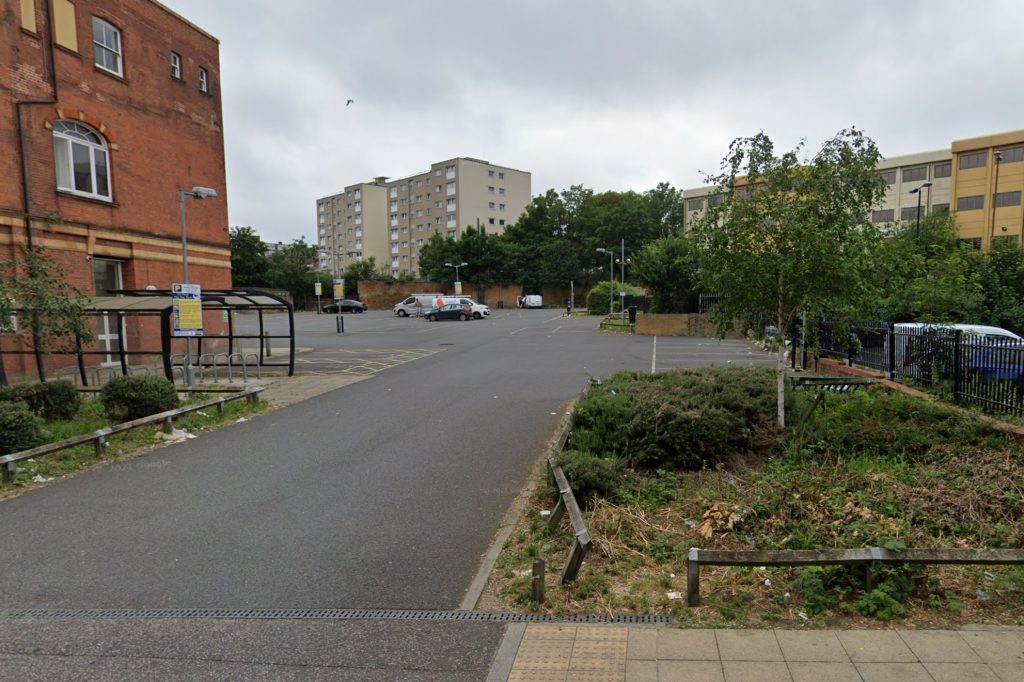
It may seem a no-brainer for a large, surface level car park to become mixed-use bringing residents and greater footfall to that end of town, but as recently as last year a key Greenwich planning document for future development sites didn’t include it.
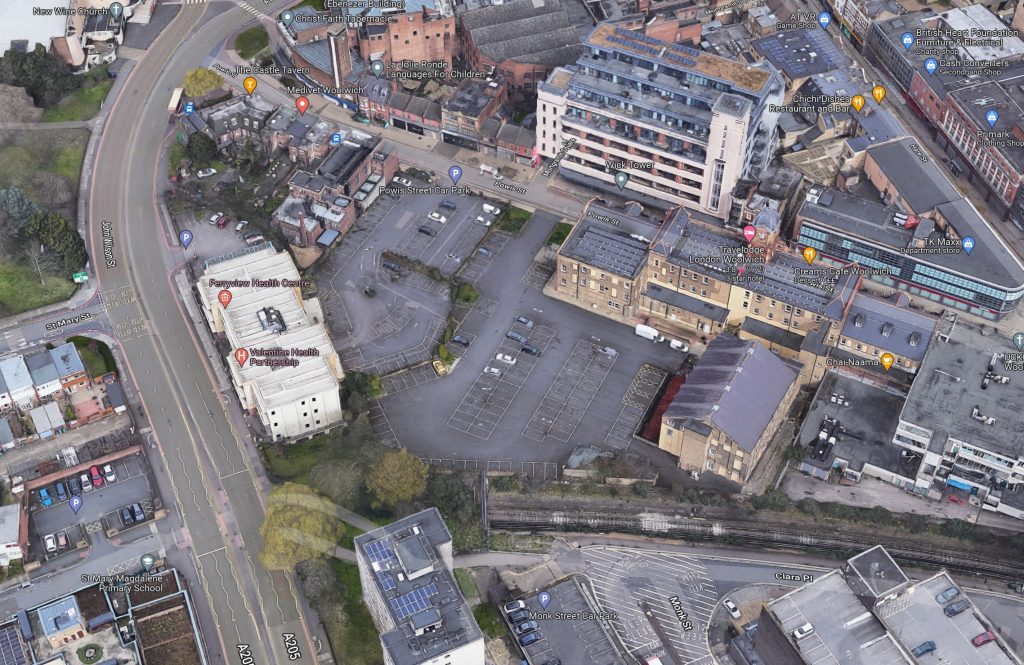
That now appears to be changing, and ties in with a large number of other changes in that end of town.

British Land stated a council report had been “Confusing suggesting it makes a contribution as an open space, but it fails to have regard to the sites contribution towards lack of townscape definition in this area.”
Greenwich Council planners responded: “Text has been amended in 4.0 to indicate that development has the potential to reintegrate the townscape and contribute positively to the Areas significance.”
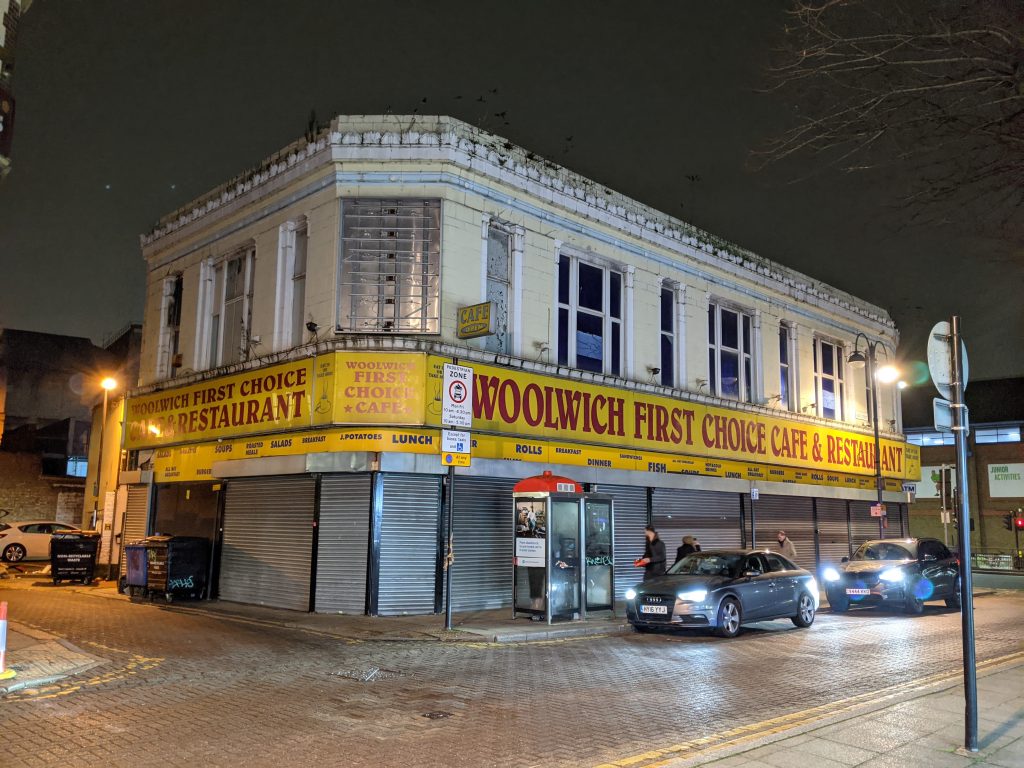
That opens the way for regeneration, and if Woolwich can retain Mortgramit Square with sensitive changes alongside development of the Powis Street car park with contextual development beside the now-listed Travelodge, this end of town will become a desirable area to visit, shop and live with plentiful assets already in place.
Timewarp
For as long as I can recall, Hare Street and the western end of Powis Street have been ghost towns. Memories of heading to the old Coronet cinema meant heading down deserted, downtrodden streets. The cinema unsurprisingly struggled with footfall and after hanging on far longer than expected, closed its door around the Millennium.
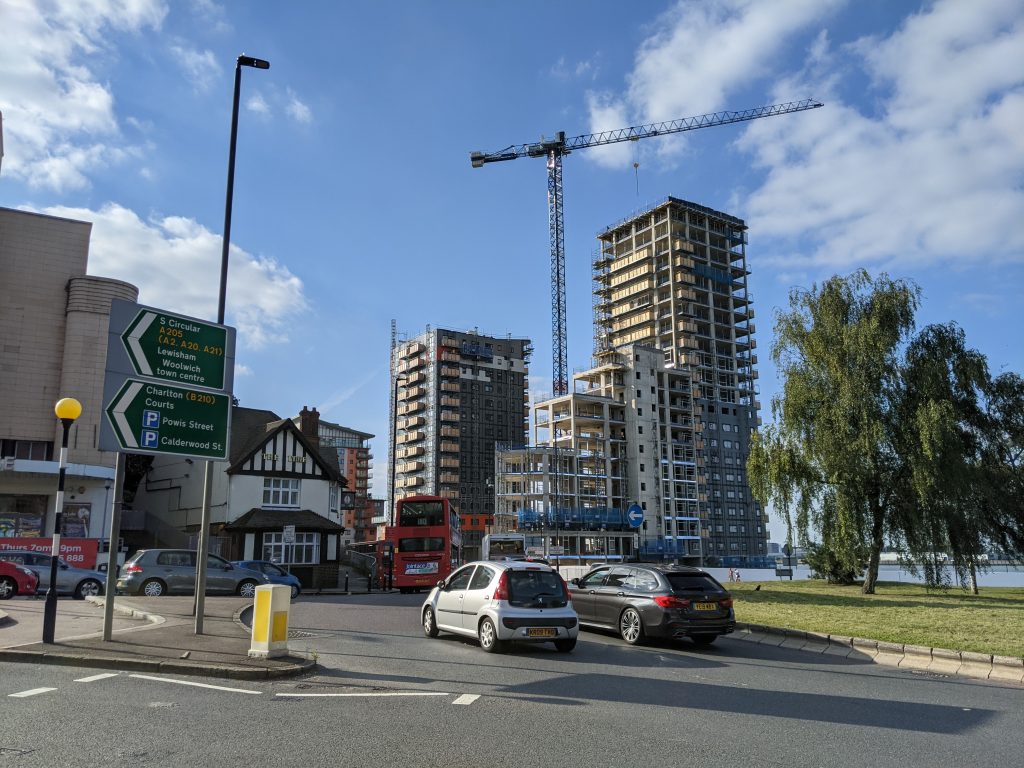
The area is now – and has been for decades – a far cry from the bustling street it once was:
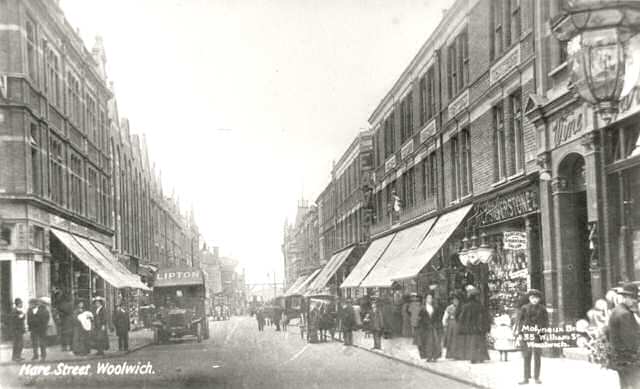
Hare Street formerly led directly to the Woolwich ferry, and views down the street would offered a glimpse towards the Thames and over to cranes at the Royal Docks.
The ferry terminal moved 20 metres west in the 1960s and road changes severed the river from the town centre. The Royal Arsenal gradually shrunk and river views ceased when Waterfront leisure centre built across the space. The Waterfront originally kept access through the site towards the river – but that didn’t last long before it was shut. It also helped maroon the foot tunnel.
And so the western end of the town centres began to become a ghost town. As I covered in the post on Mortgrammit Square, this part of town is a timewarp little changed in decades.
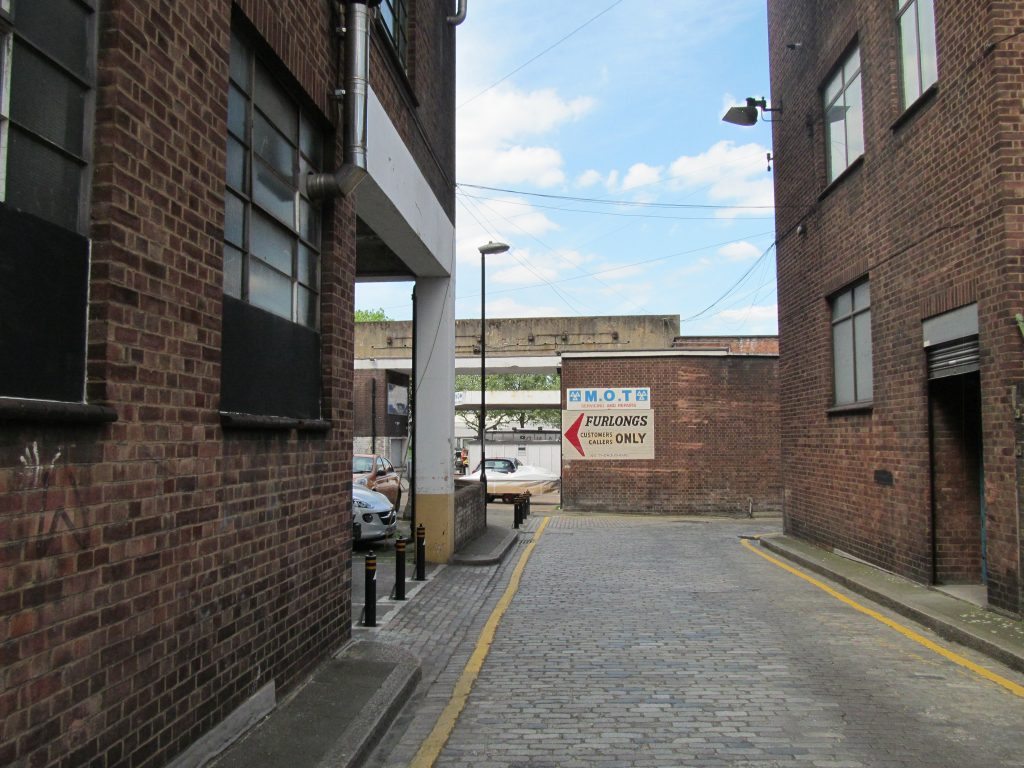
Cobbled streets and 1930s industrial buildings drip with character. This end of town sees some of the last remnants of Woolwich’s 1980s pedestrianisation. When changes were made in the 1990s, it wasn’t deemed worthwhile to change and so red brick planters once widespread now live on in very few places.
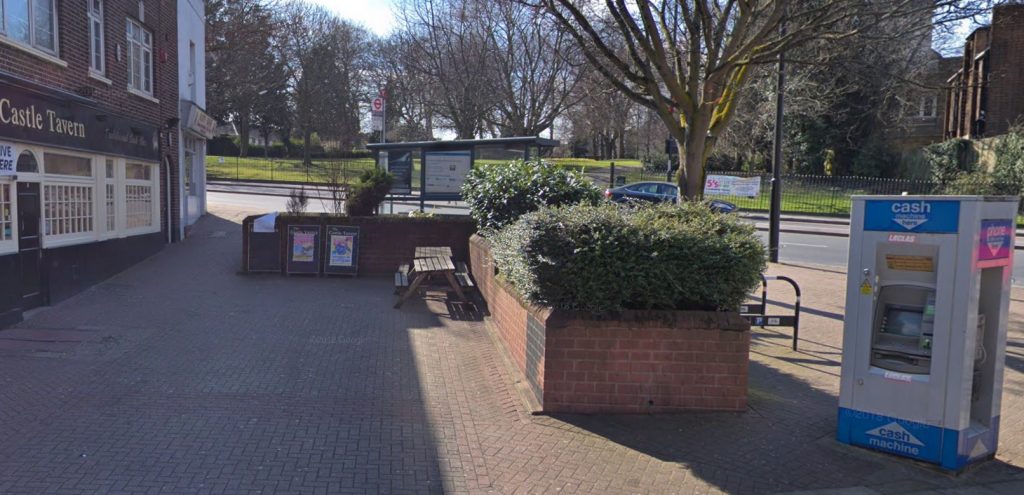
Not much changed in terms of retail offerings for many years along Hare Street. A plan to demolish many fine buildings including the art deco co op were thankfully thwarted in the late 2000s. The building was converted to housing, and Travelodge moved in over the road.
With the cinema seeing a new lease of life as a church and avoiding demolition which befell many former art deco cinemas, other gems remain such as the 1937 Granada cinema, which was also converted to a church. While the Odeon went for swooping, streamlined art deco, the Granada went for gothic. It’s incredible interior can be seen here.
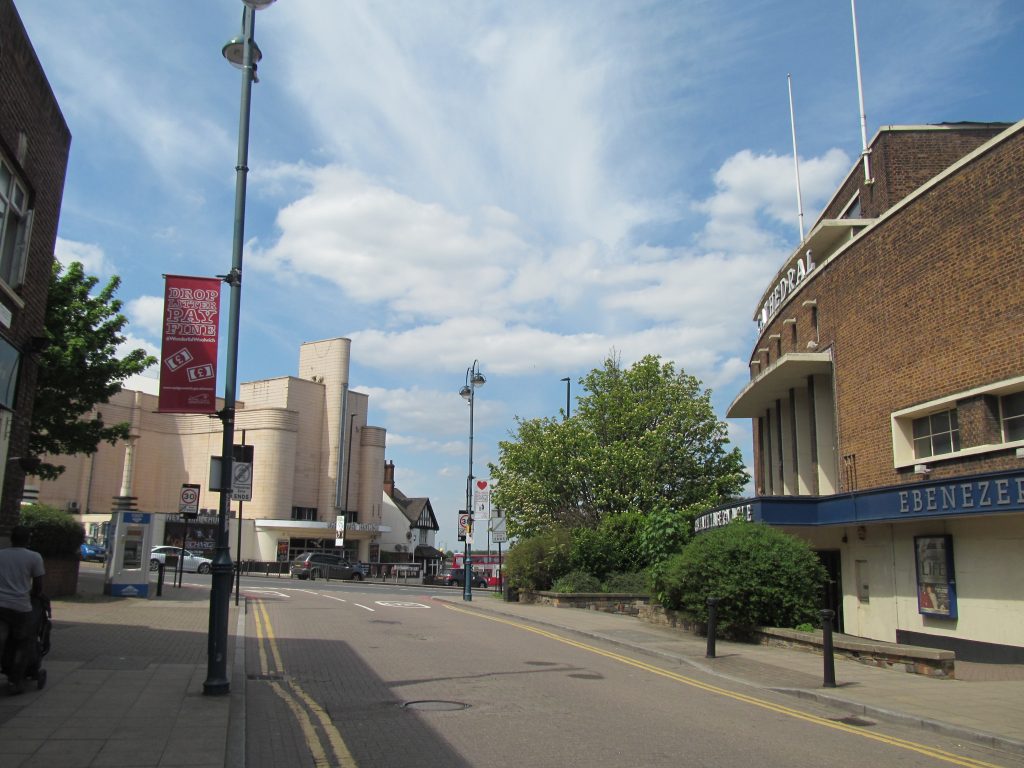
It could have been so different, and this area retaining two interwar cinemas and the art deco co-op is a wonderful success that was far from guaranteed 20 years ago.
Other changes have been ongoing, with Callis Yard – a former council depot – redeveloped.
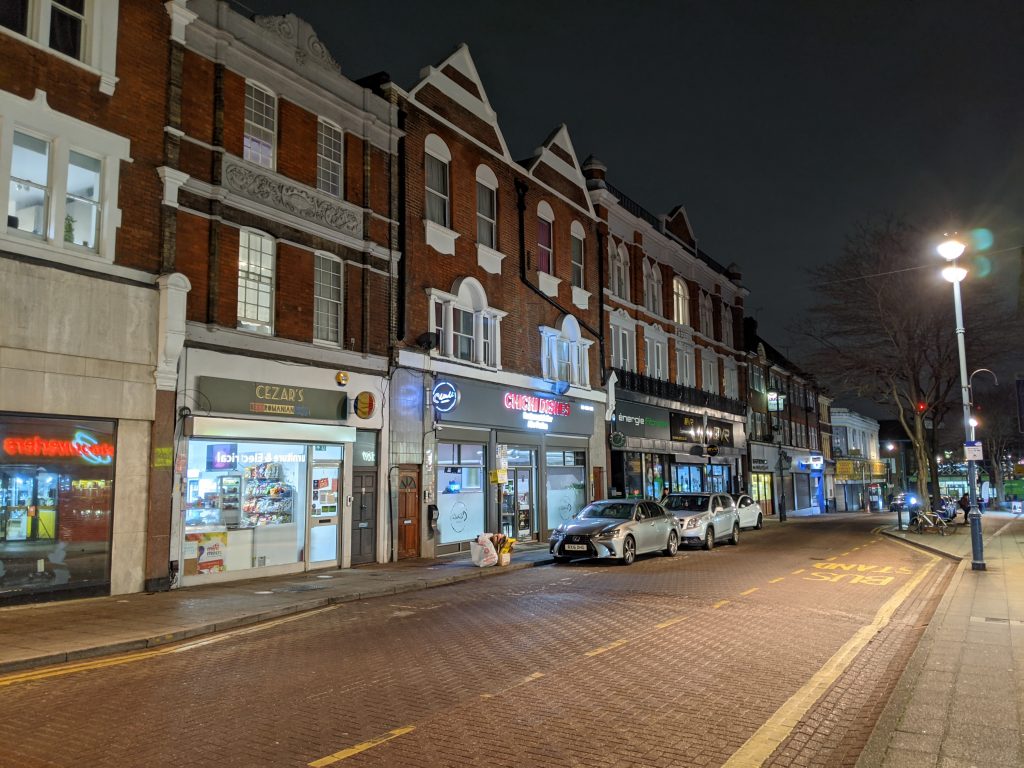
Landowners have also been restoring buildings along Hare Street in recent years.
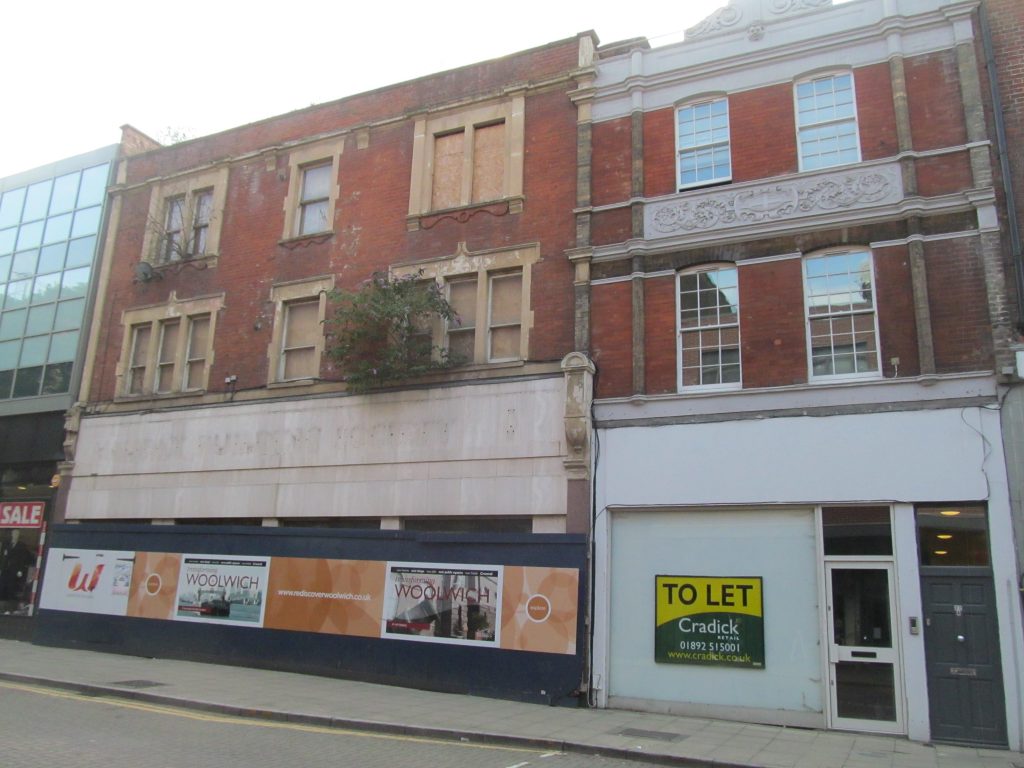
More units are occupied on Hare Street and the western end of Powis Street – excluding those where landowners have deliberately closed for a somewhat hideous redevelopment now under threat due to Conservation Zone status.
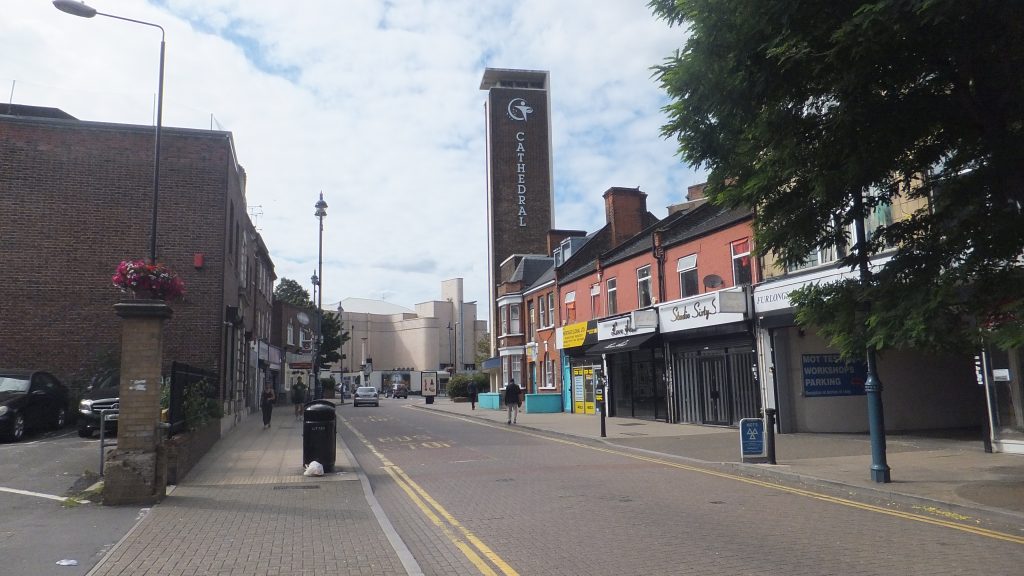
Businesses such as highly rated Hitachi Sushi have moved in which is gaining extremely positive reviews.
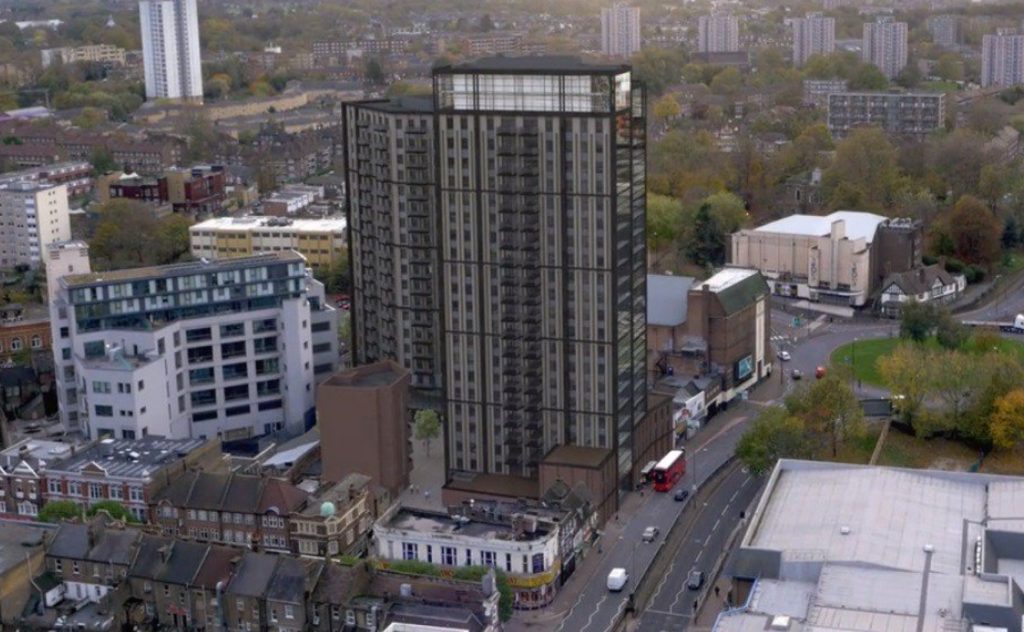
A steady trickle of plans have also gone in to convert upper floors to residential and revamp exteriors.
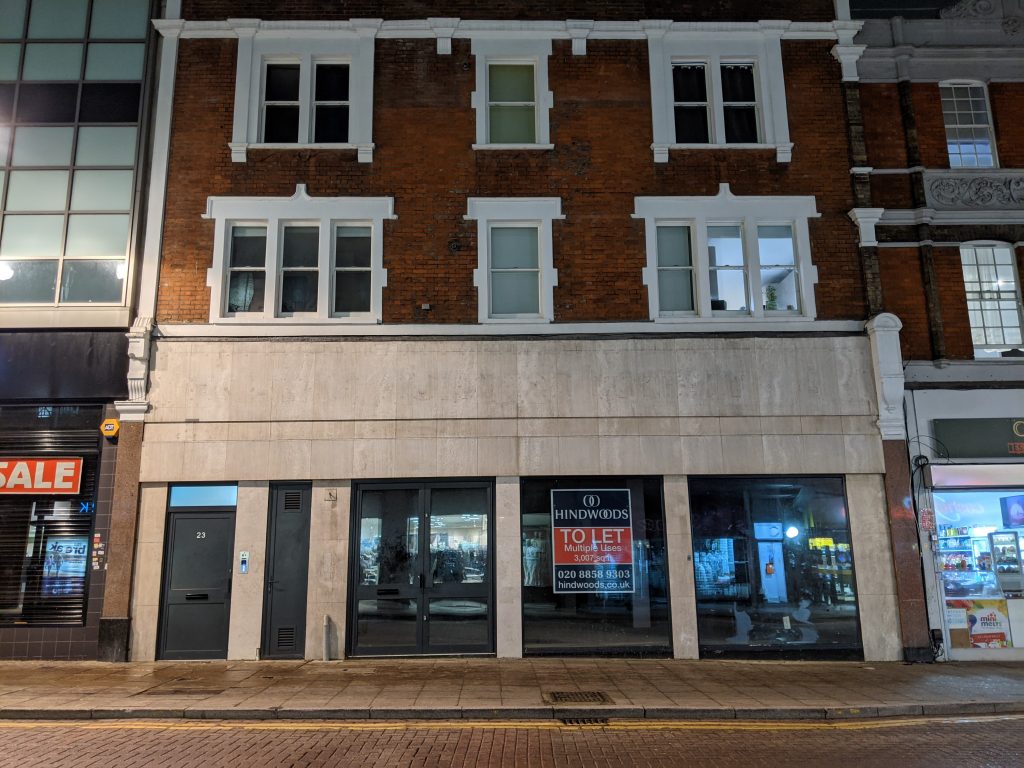
Other buildings in the western end of the town remain in a state of disrepair. Numerous plans by Antic has yet to see any movement here:
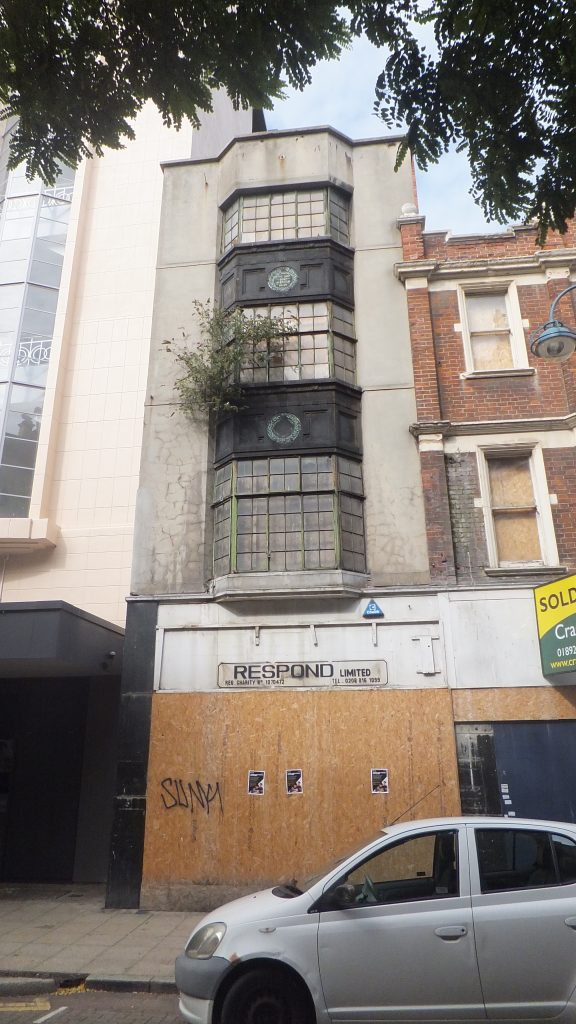
While changes have caused some improvements, other major housing developments are now well underway. Mast Quay’s final two towers were delayed for 15 years (another impact of the late 2000s credit crunch) but are now visible over a wide area.
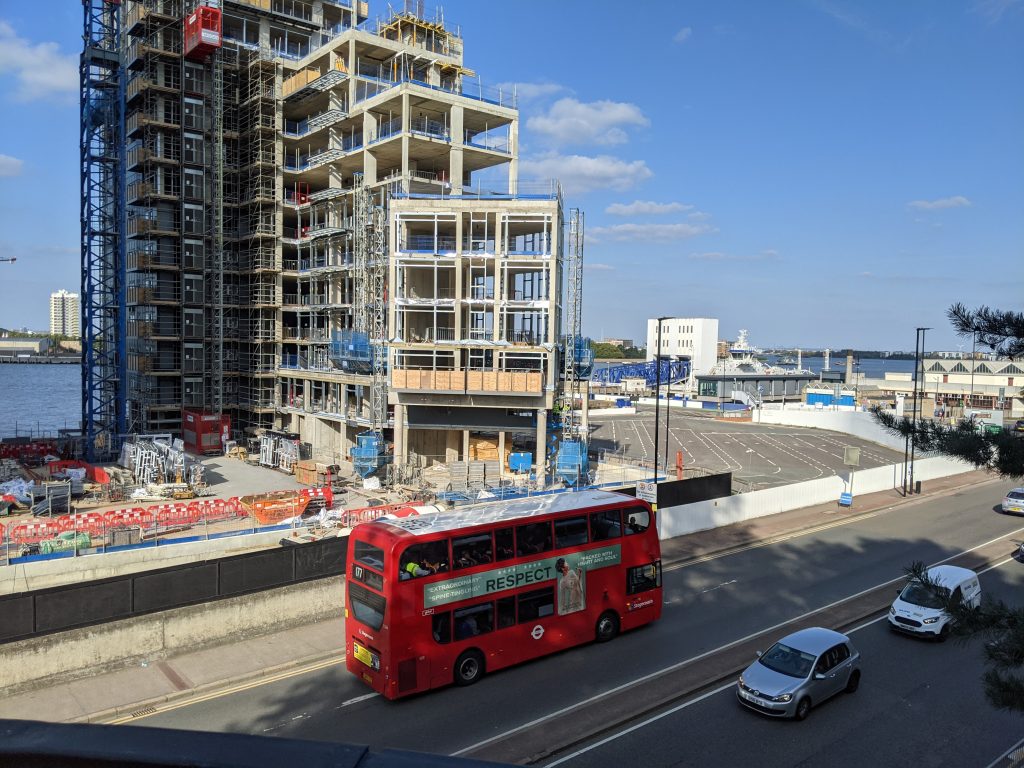
It should help bring more life to that end of town, as will four more Berkeley Homes’ towers. Two are complete, two are rising and the final two see detailed plans now being submitted.
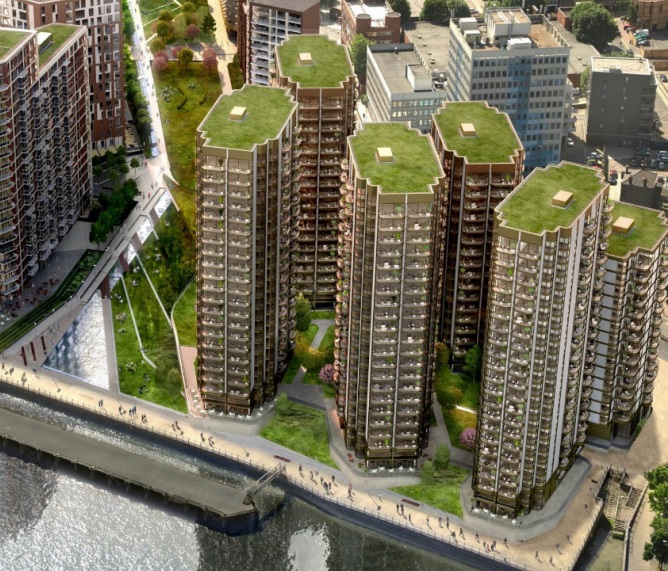
Public realm is still a major let down in this area even after much money spent. This is post change on Woolwich High Street – which is barely any different to pre-change:
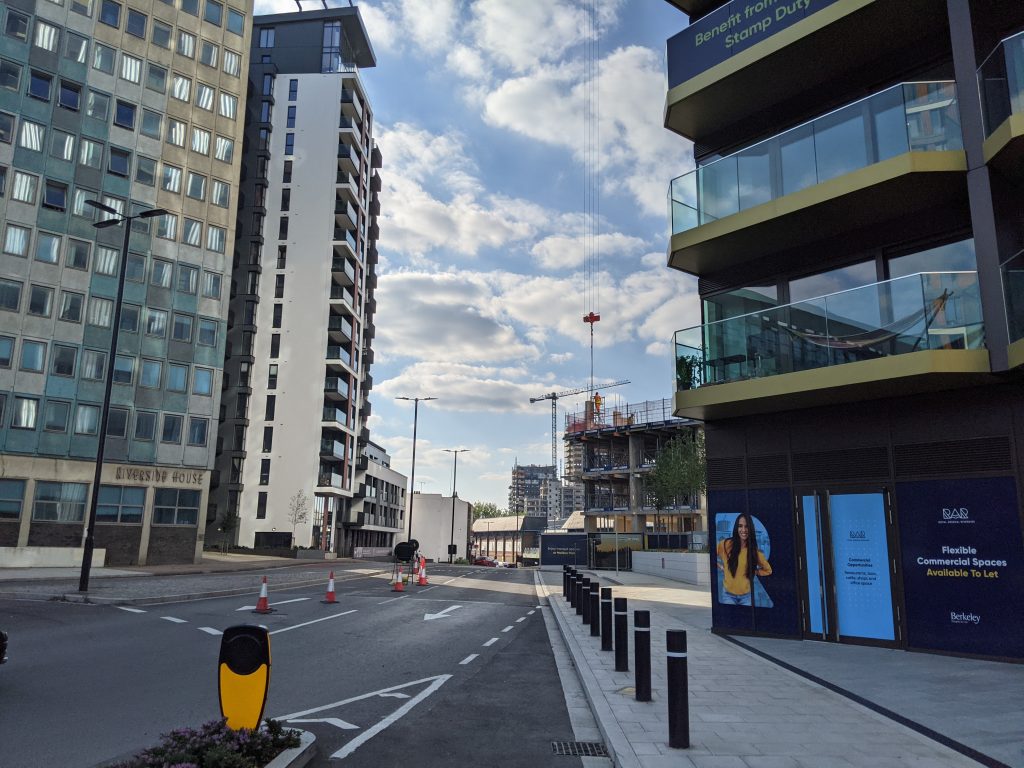
To encourage new residents to visit the town centre, this needs major improvement.
Also in this area is Riverside House, which has a proposal for conversion to 250 flats. The first attempt didn’t go very far, but new owners are trying again. It’s currently temporary art studios.
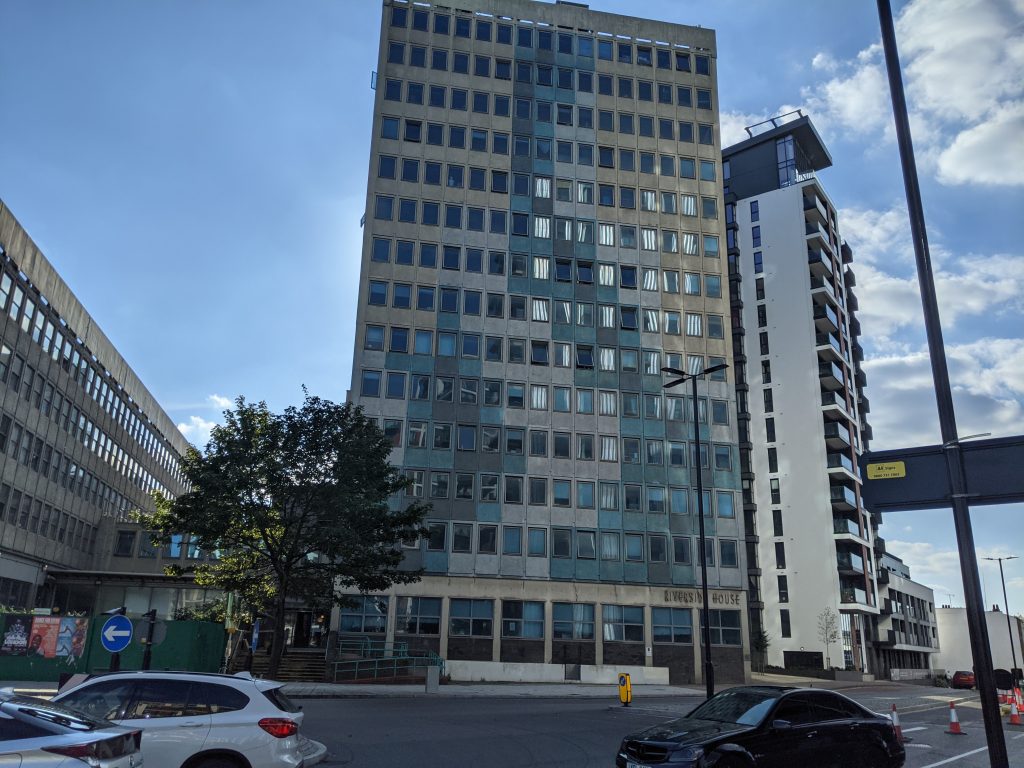
Another view of severance caused by vehicle-dominated streets:
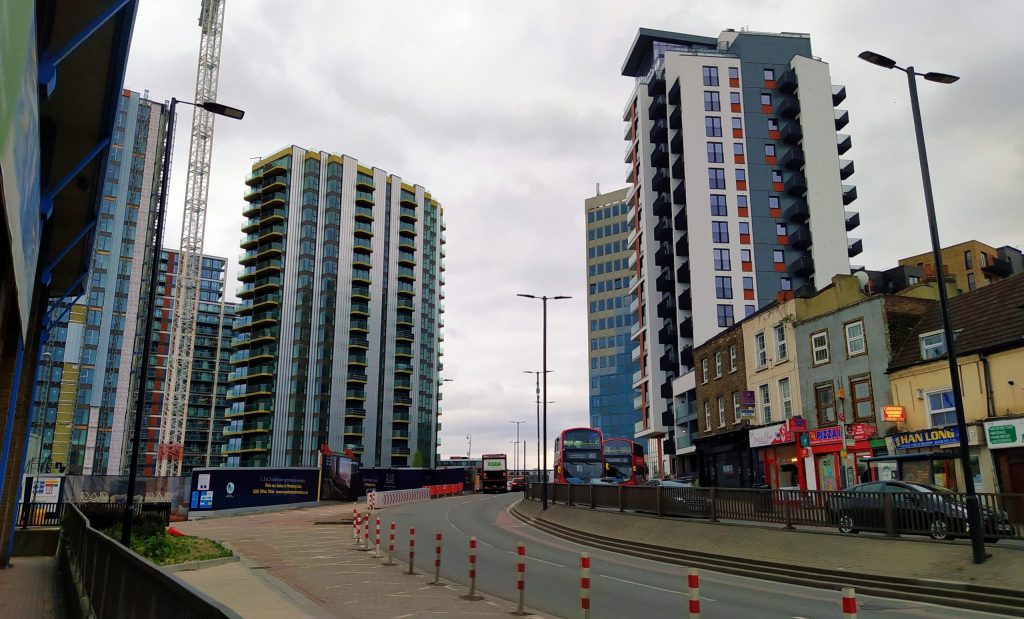
One development which has been refused but is extremely likely to pass soon (with revisions) is Beresford Street and MacBean Street.
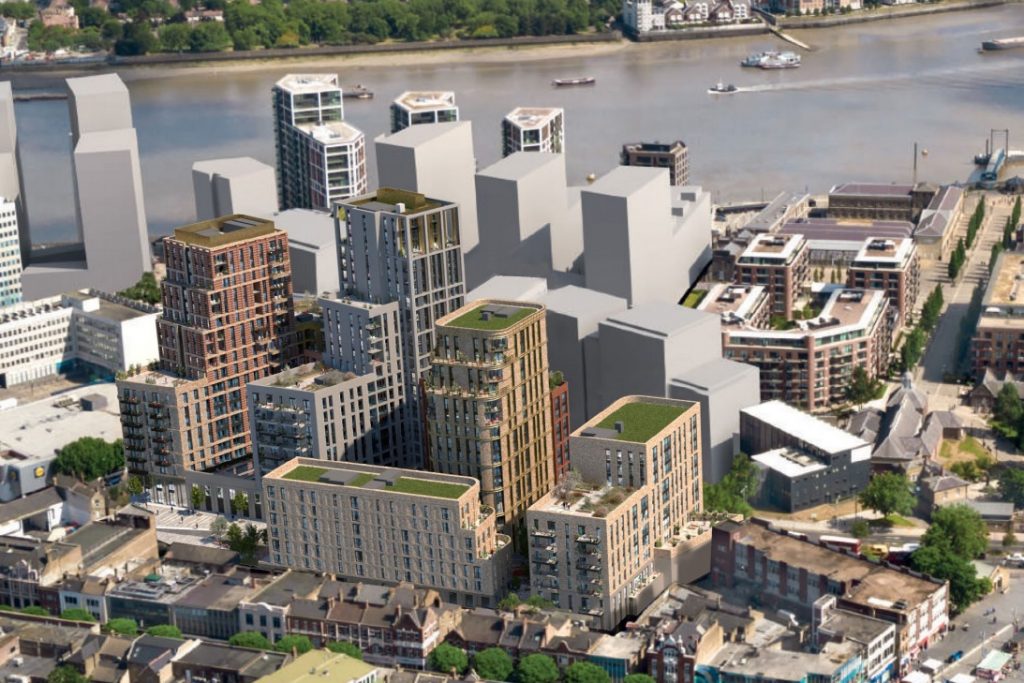
The above render also shows other Berkeley housing plans contained in the Arsenal masterplan.
In addition £3.8 million is due to be spent on Woolwich town centre via the Heritage Action Zone, and £17.2m from the Future High Streets fund. We don’t yet know exactly what areas they will cover.
Both funds should cover the western end of the town and alongside amyriad of mixed-use development should give a real shot in the arm to western sections of Woolwich town centre.
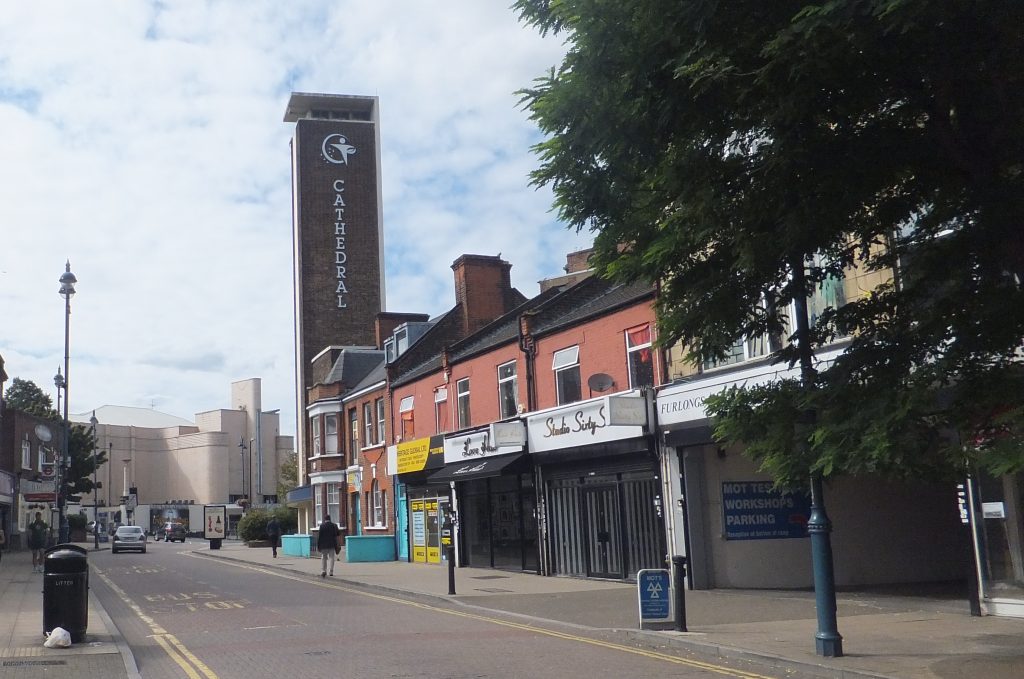
In a way I’ll miss the melancholic and desolate areas but a thriving, buzzing area of town providing housing, leisure and jobs will be a massive boost. With planning strategies now offering hope of retaining the best of what exists, we may see a transformed part of London taking shape in the next decade.
Running a site alone takes time and a fair bit of money. Adverts are far from enough to cover it and my living costs as a private renter.
You can support me including via Paypal here Another option is via Patreon by clicking here You can also buy me a beer/coffee at Ko-fi here There's also a Facebook page for the site here Many thanks
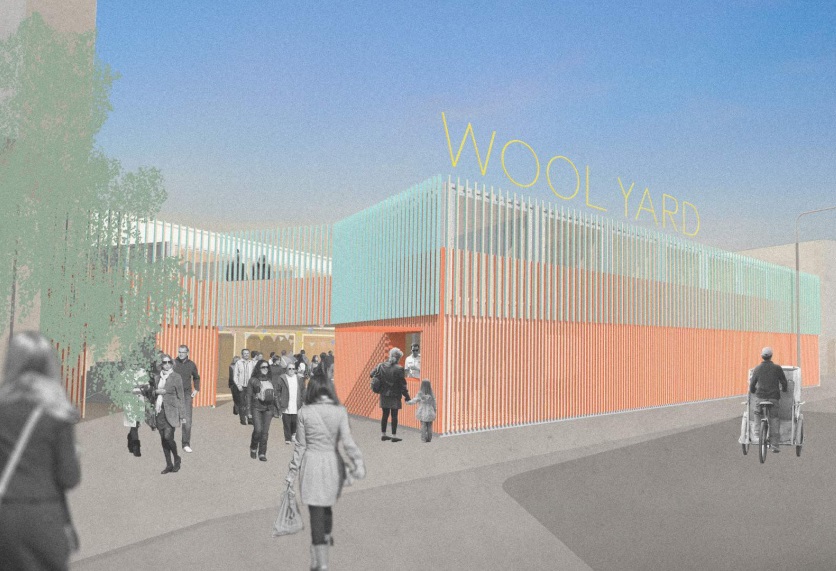


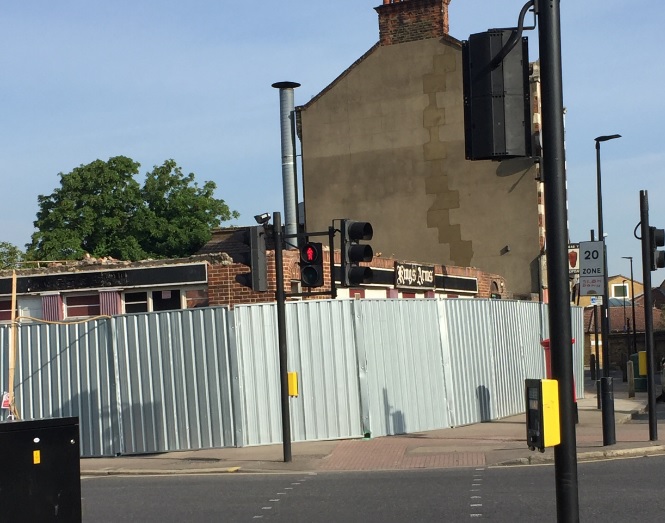
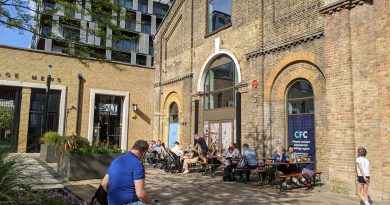
This area of the Town Centre to the bottom of Powis Street and Hare Street is in need of regeneration. So any improvements will be very welcomed.
I am pleased the the west end of Woolwich Town Centre is to be included in the conservation area. This end of Woolwich retains some nice older buildings with historical value which shows how Woolwich Town Centre used to be many many years ago. Like the upper floors to buildings on Hare Street.
I do like the idea of mixed use buildings in Town Centres providing commercial/retail space with homes built above. To provide much needed housing.
Looking forward to seeing how the changes will improve this area of Woolwich Town Centre which is in need of regeneration to bring footfall back to this area of the Town Centre.